
If you wish to understand yourself,
seek yourself in the wideness of the world;
if you wish to understand the world,
seek in the depths of your own mind.
Rudolf Steiner
The four elements
Imagine you're taking a walk in the forest on a day in spring. The weather is fine: the sky is blue with the odd cloud, there is a light breeze, everything feels very pleasant. You smell the fresh perfumes of the awakening greenery. As you look around you, you see trees, shrubs and herbs. You see the tree trunks, the various hues of green and the light filtering through the leaves. Now and then you hear leaves rustling. You notice the yellow dandelion flowers and the tender pink blossoms of wild cherry trees. You hear the gay songs of all sorts of birds. A squirrel dashes up a tree. There is a puddle on the path. You pass a bench and a sign saying 'No admittance'. You meet other people, who are walking their dogs. It's nice and warm in the sun, but still slightly cold in the shade. You get to a bridge and see the water flow. Not all of it flows at the same speed: it is faster in the middle of the brook than along the banks. There are eddies in the stream. The water hits a rock that's lying in it and flows around it, appearing to stand still just behind the rock.
All of these things and events can be classified in various ways. You could distinguish between living and lifeless objects, between man-made and natural objects, between plants and animals, between higher and lower plants, between mammals, birds and reptiles, between growing organisms and dying organisms, etc. What classification you use depends on the way you observe. One of the many ways to observe is that based on the four elements, a classification of nature that was already used by the ancient Greeks. In the above example, you can distinguish all four elements: earth, water (or liquid), air and fire (or warmth).
You see solid objects, which are called earth, including the trees, the bridge, the plants, the animals and the people, the bench and the no admittance sign. You also see flowing, eddying and standing water. You feel the movement of the air and see its blue colour. You feel the temperature, that is, the cold and the warmth.
Earth
The word earth refers to the solid element and includes everything that has a solid shape. All lifeless and living solid objects in nature and all man-made objects belong to the solid element. Thus, rocks, stones, the soil, ice, plants, trees, animals, human beings, cars, machines, houses, books, etc. all belong to the element called earth.
What do these objects have in common?
- They have a fixed form. You can grasp them.
- They have clearly defined boundaries. You can't move through these objects and if you try to do so, you bump into them. You can establish their boundaries.
- You can't look into them. You're looking at their exterior; your senses hit a barrier. And since you can't look inside, the interior remains hidden. Even if you open up a solid object, you'll still be looking at a new 'exterior'.
Concepts relating to the earth element include solidness, boundaries and impenetrability.
As you hit the objects belonging to the earth element (either literally or metaphorically as your senses encounter them) you become aware that things exist outside yourself. You become aware of the objects as well as of yourself.
Water
The element called water includes anything that flows, that is, all liquids, not just water itself. In fact, water is only included in it if it's in its liquid state, not as ice or vapour. A brook or a lake is not a solid object like a tree or a table. You can't grasp it; the water flows, and you can see through the water.
Features:
- Water and liquids flow; there is movement, there are eddies.
- Water is contained within a riverbed or some other form of the solid element.
- Water is penetrable; though it has boundaries, both physically and to the senses, these boundaries can be penetrated.
- You can be inside the water, so there is no hidden interior.
The water element is characterised by the concepts of flow and movement and penetrability.
Water can, in a way, also be regarded as a solid object. The water in a pond or puddle does not flow. The water's surface is a boundary. The water in Dutch ditches is often too turbid to allow you to look into it, so its surface presents a barrier to your senses. Conversely, there are solid objects whose shape can be changed and objects that you can see through. So there are certain similarities between the earth and water elements, but their features can be grasped more accurately by studying their differences. That will show you that features that characterise the earth element do not apply to the water element. You don't bump into water, you can move through it and your senses can penetrate its surface. Even in a puddle, the shape of the water is determined by that of the soil around it. And the ditch water is turbid because there are solid particles floating in it.
Air
Air is the element that surrounds everything. You're entirely surrounded by air, and you can move through it. If you take a step forward, the air will make way for you effortlessly and reunite behind you. Air thus differs from the solid element and the water element, which you can observe and encounter.
Air spreads in all directions. It does not accumulate in a particular place like solids and water, and its composition is the same everywhere.
Air can only be observed indirectly, for instance in moving leaves, paper being blown away, white-crested waves forming on water or wind brushing past your face. The presence of air that doesn't move can be derived from the fact that birds and insects fly. If you look through air, you see objects as they are; air does not distort the objects. The air causes the blue colour of the sky and the red colours of sunrise and sunset.
Features:
- Air makes way for other things, by moving aside.
- Air spreads in all directions.
- Air itself is invisible and allows things to be observed without distortion.
- Air causes the colours of the sky to manifest themselves.
Air is thus characterised by the concepts of unselfishness (in that it moves aside, is itself invisible, makes other things visible and causes the colours of the sky to be seen) and spreading.
Just like water shares certain features with the earth element, air shares some features with water. For one thing, it flows. But whereas water can be contained in a riverbed and remains together as a unit, air spreads in all directions.
Warmth
You can observe warmth (or heat, as it's called in physics) by feeling that things are hot or cold. You always sense the temperature of objects relative to your own temperature and that of your environment. This means your observations of warmth are relative. You can't keep out warmth; it pervades your body.
In addition to this warmth in the ordinary sense of the word, there is also warmth which can arise within you out of nothing, for instance if you become excited about something, if you 'warm to some idea', if you're affected by something or if you start to blush. You become active. Cold can also arise in this way, for instance if you become nervous, withdraw into yourself or create a distance. You can't keep out these types of warmth and cold either; they pervade you completely.
You can also perceive the warmth and cold that are radiated by others through their moods, when they're enthusiastic or have cold thoughts.
Features:
- Warmth, whether in the form of physical, personal or 'social' warmth, immediately pervades you entirely.
- Warmth has no boundaries.
- Warmth can arise within you out of nothing.
Warmth can be characterised by the concepts of pervasiveness, lack of boundaries and impulse creation.
As we go from earth, via water to air, the substance becomes ever more rarefied, and with warmth, any sense of tangibility is lost: you can only perceive it. You can observe warmth in the air, in an indirect fashion, for instance in the turbulence of the air on a hot day, or the white vapour you exhale on a cold winter's day. Warmth is the element that pervades everything and that provides impulses (for instance to become active). Warmth induces internal and external activity.
Using the elements to aid observation
The four elements, earth, water, air and warmth illustrate four different features of the things around you. They can also make you aware that you can observe the world in different ways, namely as solid shapes, as flow, as characteristics and as impulse. You can describe a dog by describing its exact shape (= earth element), or you can describe, imitate and experience its movements (= water element), or you can characterise it (= air element) or describe what impressions it evokes in you (= warmth element). Thus, the elements provide a basis for four different types of observational attitude, four different modes of observation. The present chapter uses the features of the elements to describe observational attitudes, and presents some results and examples. It ends with some exercises.
In many cases, you have probably been observing on the basis of their four modes of observation, or aspects of them, without being aware of it. As you start to practice using the method, you may find that you're using a particular mode of observation frequently, or not at all, or only certain aspects of it. Distinguishing the modes of observation and naming and classifying your observations on the basis of one of these modes may help you identify gaps and achieve balanced observation.
This method can be used for living objects, situations and events, which means that where this book mentions objects you could also substitute situations or events.
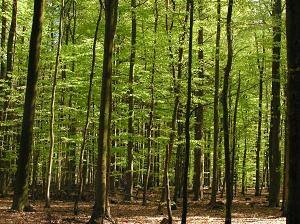
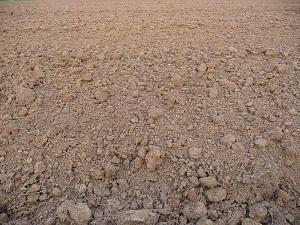
Earth: the solid element
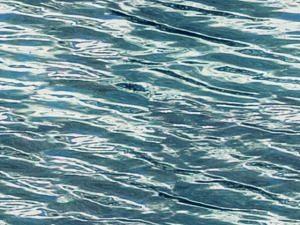
Water: the flowing element
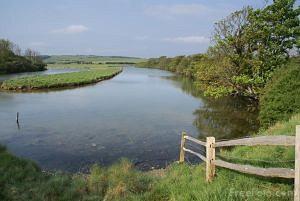
Water flows in a boundary
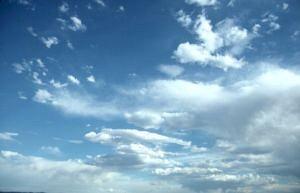
Air: the invisible element

When the air is unclear, things look foggy
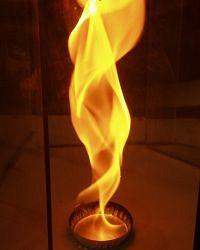
Warmth: the pervasive element
Exercises
Make some observations, and classify your observations on the basis of the four elements. Assess the features of the elements and try to draw conclusions about these features.
Do you think the classification based on the four elements is useful? What arguments can you find for and against its usefulness?
Solid objects can be grasped, while water runs through your fingers, air is intangible and warmth pervades you. Try to find other, similar differences.
